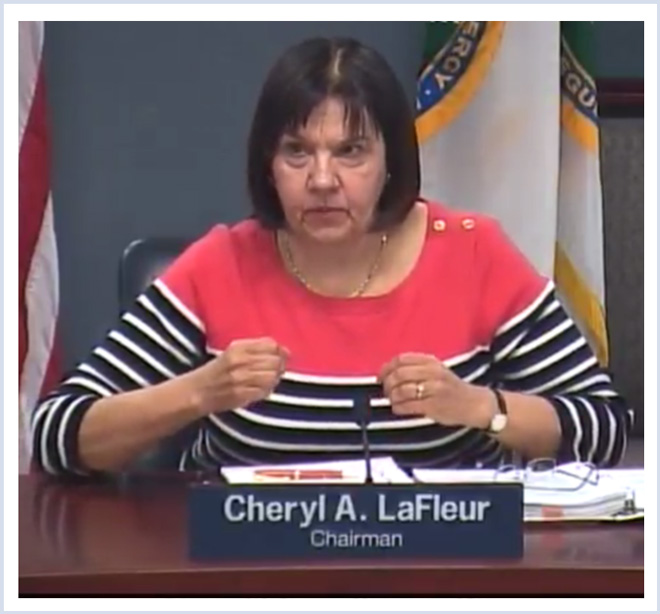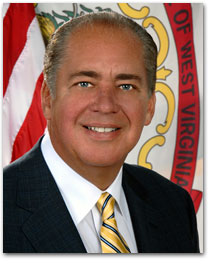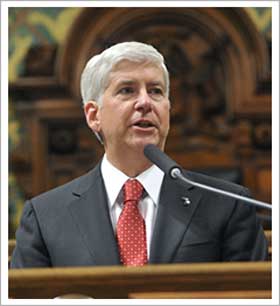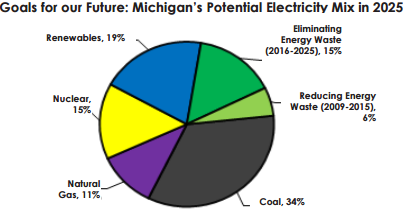
Spectra Energy’s Algonquin Incremental Market Project, which will run from New York to Massachusetts through Connecticut and Rhode Island, still needs approval from the New York Department of Environmental Conservation before construction can begin.
FERC discounted opponents’ concerns about the pipeline’s proximity to Entergy’s Indian Point nuclear generating station. “I’m dumbfounded that FERC could just be blithely going ahead,” said Susan Van Dolsen of the group Stop the Algonquin Pipeline Expansion.
More: The Journal News
Sen. Alexander Blasts NRC for Not Asking for More Yucca Mountain Funding

U.S. Sen. Lamar Alexander (R-Tenn.) criticized the Nuclear Regulatory Commission for failing to request additional funding that he says will be required to license the Yucca Mountain nuclear waste repository in Nevada.
Alexander said in a Senate Appropriations subcommittee hearing last week that the NRC has unspent funds in its budget to start the licensing process, but will need more resources. “So I think it’s fair to ask the question: Knowing that there are additional steps and they will cost money, why would you not request additional funds in your budget?”
Alexander, a nuclear power proponent, has said it is crucial to break the “25-year stalemate” over nuclear waste.
More: The Hill
Judge Criticizes EPA’s Response to Foundation’s Records Request
A federal judge criticized the Environmental Protection Agency’s “fumbled” response to a Freedom of Information Act (FOIA) request by a conservative group, but ruled that the group failed to prove the agency acted in bad faith and declined to award damages.
Judge Royce Lamberth in D.C. said the EPA allowed some records, including emails, to be destroyed in spite of pending discovery requests from the Landmark Legal Foundation, which sought the records to determine if the agency delayed issuing regulations before the 2012 election for political purposes.
“Despite admonitions from this court and others … EPA continues to demonstrate a lack of respect for the FOIA process,” Lamberth wrote in his opinion. “Neither EPA nor its counsel has offered Landmark or this court any indication of regret.”
More: The Hill
PennEast Pipeline Opponents Say FERC Consultant has a Conflict of Interest
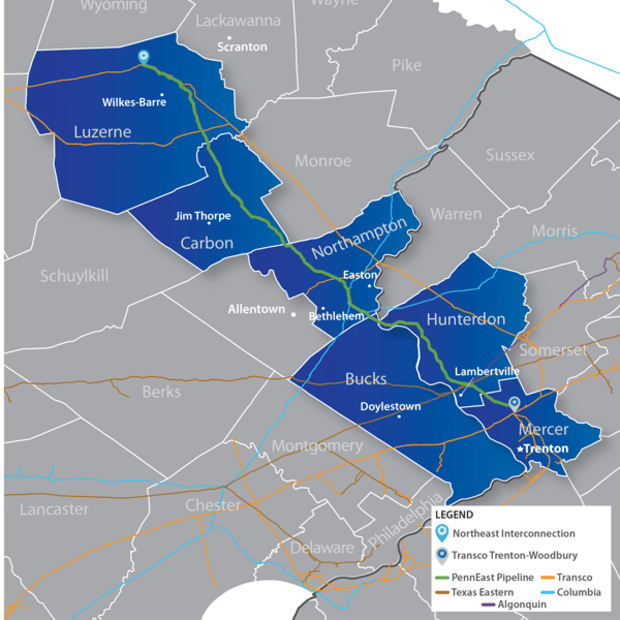
Hopewell Township Mayor Harvey Lester says the FERC consultant, Tetra Tech, is a paid member of the Marcellus Shale Coalition, an industry trade group that supports the proposed 114-mile pipeline to carry natural gas from the Marcellus Shale region in Pennsylvania into New Jersey.
The New Jersey chapter of the Sierra Club also objected to FERC’s hiring of Tetra Tech to review the project’s environmental impact statement. “This is an outrageous conflict of interest and a violation of the FERC rules,” wrote Director Jeff Tittel.
More: NJ.com
House Committee Chair Seeks Deleted EPA, McCarthy Texts
U.S. Rep. Lamar Smith (R-Texas), chairman of the House Science Committee, said he’ll seek a subpoena to obtain text messages to and from Environmental Protection Agency Administrator Gina McCarthy if the agency doesn’t give them up voluntarily.
Smith said the agency declined to provide the text messages to the Competitive Enterprise Institute in response to a public records request. The agency provided emails but has said it did not believe that text messages were required to be retained.
More: The Hill
NRC’s Annual Reviews Show 94% of US Reactors in Top Performance Categories
The Nuclear Regulatory Commission’s annual assessment letters show that 75% of the nation’s 100 nuclear reactors met all safety and security objectives in 2014, and 94 of those reactors were in the top two performance categories.
Nineteen reactors were identified as needing one or two “low significance” items. They are Calvert Cliffs 2 (Maryland); Clinton (Illinois); Davis-Besse (Ohio); Diablo Canyon 1 and 2 (California); Fermi 2 (Michigan); Fitzpatrick (New York); Limerick 1 and 2 (Pennsylvania); Millstone 3 (Connecticut); Oconee 1 (South Carolina); Oyster Creek (New Jersey); Palisades (Michigan); Point Beach 2 (Wisconsin); River Bend (Louisiana); Salem 1 (New Jersey); St. Lucie 1 (Florida); Waterford (Louisiana) and Wolf Creek (Kansas).
Two reactors — Pilgrim (Massachusetts) and Point Beach 1 (Wisconsin) — fell into the “degraded” performance category and will be the subjects of increased oversight. The twin-unit Arkansas Nuclear One reactors fell into a fourth category of oversight after the NRC made safety findings of “substantial significance.”
More: NRC
EPA Designates Mahomet Aquifer as ‘Sole Source’
The Environmental Protection Agency has designated the Mahomet Aquifer system in east-central Illinois as a “sole source” aquifer, raising the possibility of heightened federal review of projects in an area that may be targeted for natural gas development involving hydraulic fracturing.
The “sole source” designation, which means more than half of the population depends on the aquifer as its drinking water source, allows the EPA to review the effect that any federally funded project might have on the aquifer.
Gas exploration companies have leased mineral rights in the region, although the amount of drilling is less than the state first anticipated.
More: EPA
DOE Report Sets National Wind Energy Goal of 35% by 2050
A Department of Energy report says that wind energy could provide 35% of the nation’s electricity by 2050, up from the current 4.5%, if the cost of wind turbines comes down and new territories are opened up for development.
The report, “Wind Vision: A New Era of Wind Power in the United States,” makes no policy recommendations, but it does provide what it calls a “roadmap of targeted actions.”
The American Wind Energy Association said the goal is within reach. “We can do this,” said Tom Kiernan, CEO of the association. “The industry stands ready to achieve these numbers.”
More: USA Today; Energy Department
NRC’s Burns Touts Safety Improvements, but Public Citizen Accuses it of ‘Sluggishness’

The chairman of the Nuclear Regulatory Commission said the agency and the nuclear industry have improved safety at U.S. reactors since the 2011 Fukushima disaster, but a watchdog group accused the NRC of “sluggishness” in improving standards.
NRC Chairman Stephen Burns said that “both the NRC and the U.S. nuclear industry took swift and decisive action to address many of the key lessons learned from that event.” He said the main safety improvements would be completed by the end of 2016.
But Allison Fisher, outreach director of Public Citizen, said the NRC “has yet to require nuclear power plant operators to complete implementation of a single one of the post-Fukushima safety upgrades recommended by the agency’s own staff.”
More: The Hill
NRC to Review Korea Electric’s APR1400 Nuclear Reactor
The Nuclear Regulatory Commission announced that it will conduct a full design certification review of the APR1400 nuclear reactor design from Korea.
The NRC said a design for a 1,400-MW reactor submitted in December by Korea Electric Power Corp. and Korea Hydro and Nuclear Power met the requirements for a full certification review. The agency’s review will determine whether the reactor design meets U.S. safety requirements.
The APR 1400 is a pressurized water reactor based on the Korean Optimized Power Reactor 1000.
More: Penn Energy
McConnell Urges US Governors to Defy Clean Power Plan

U.S. Sen. Mitch McConnell (R-Ky.) wrote an op-ed urging governors to refuse to implement the Environmental Protection Agency’s proposed emissions reduction regulations, calling the regulations an “attack on the middle class.”
McConnell, a coal proponent and Obama administration foe, said governors could simply refuse to submit their state plans to the government.
“Think twice before submitting a state plan — which could lock you in to federal enforcement and expose you to lawsuits — when the administration is standing on shaky legal ground and when, without your support, it won’t be able to demonstrate the capacity to carry out such political extremism,” he wrote in the Lexington Herald-Leader.
More: Lexington Herald-Leader
Study: PJM Has Most at Stake in Fate of Order 745
PJM stakeholders face the greatest potential disturbance in the use of demand response in the wholesale capacity market if a D.C. Circuit Court of Appeals ruling limiting the jurisdiction of the Federal Energy Regulatory Commission is allowed to stand, according to a report released by EnerKnol Research, an energy policy analytics company.
However, the study concluded DR resources would continue to grow. “Demand response resources could still thrive in retail and ancillary markets if Order 745 is vacated, but with varying impacts to industry,” Chief Policy Strategist Erin Carson said in the report, “Demand Response to Grow Under Alternate Scenarios Regardless of FERC Order 745.”
PJM is set to receive more than $20 billion in demand response value through future capacity commitments.
FERC and PJM have petitioned the U.S. Supreme Court to hear the case. (See FERC Files EPSA DR Appeal with Supreme Court.) The RTO in January submitted to FERC a contingency plan to incorporate DR in May’s Base Residual Auction if the Supreme Court allows the ruling to stand.
More: EnerKnol Research
Compiled by Ted Caddell
